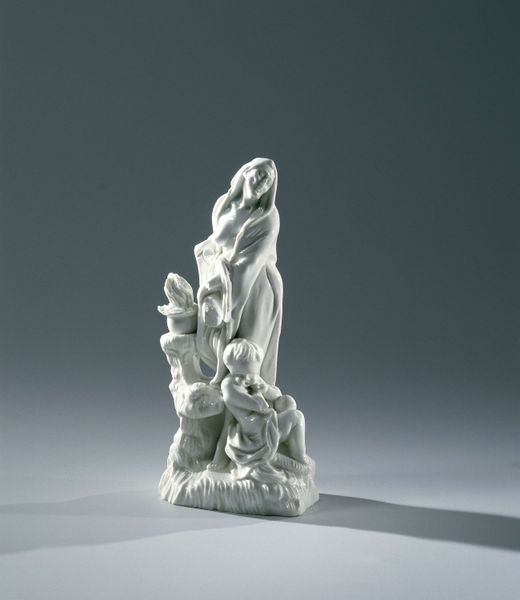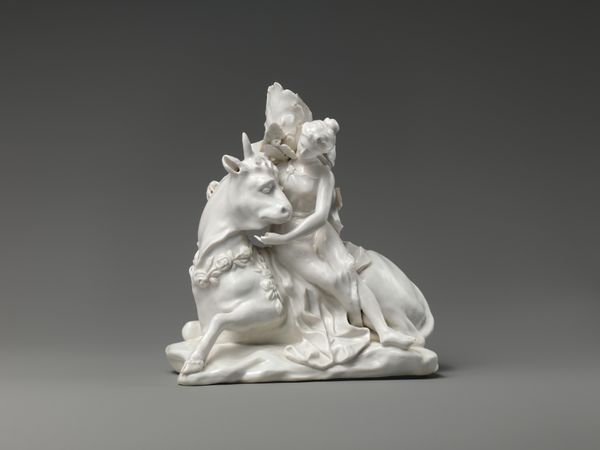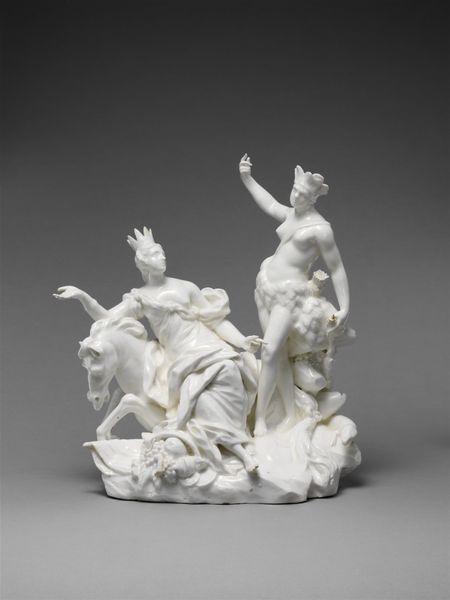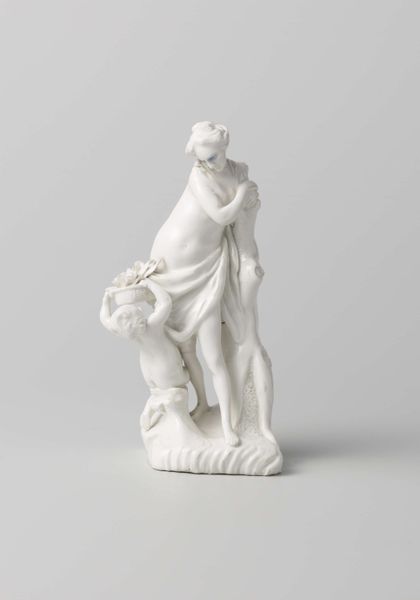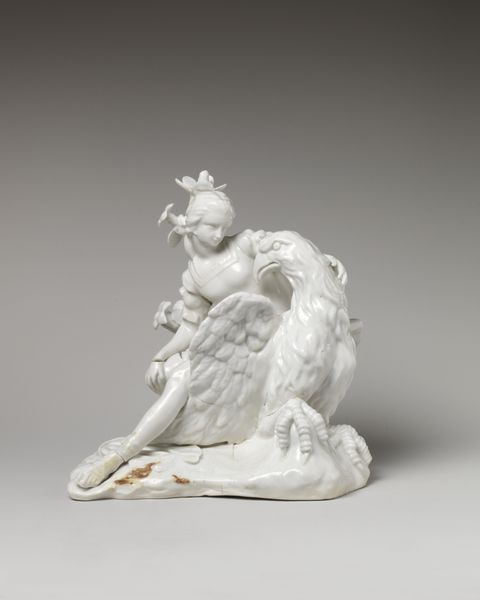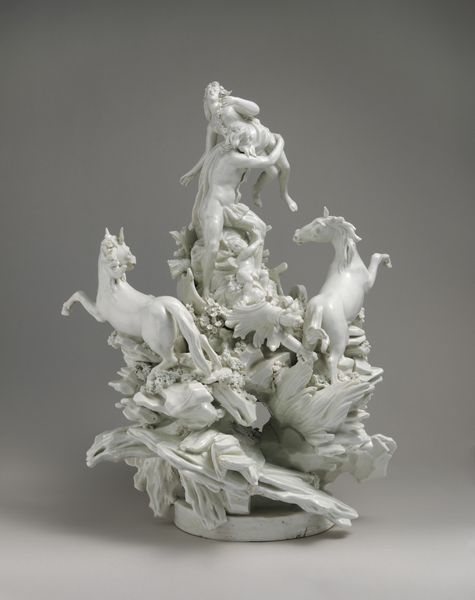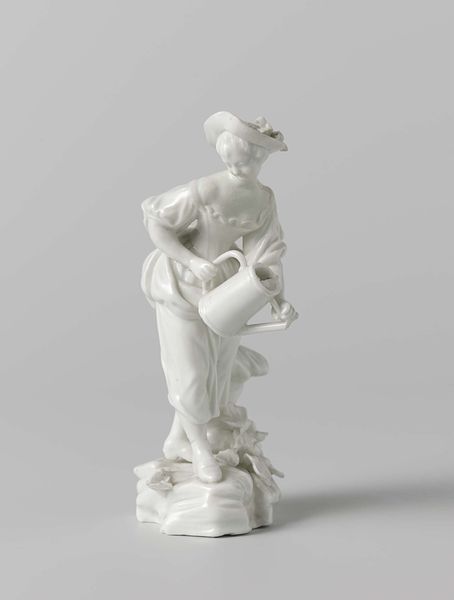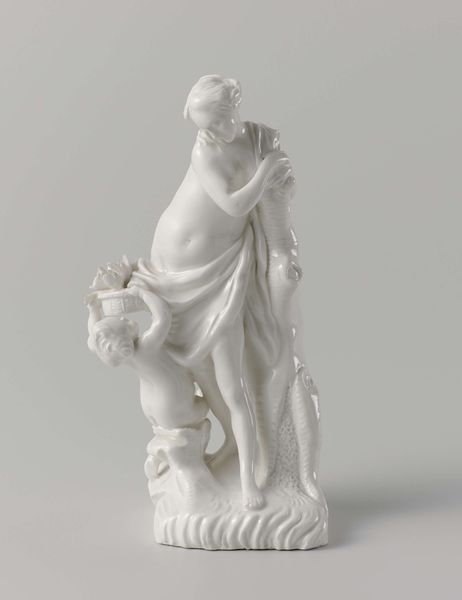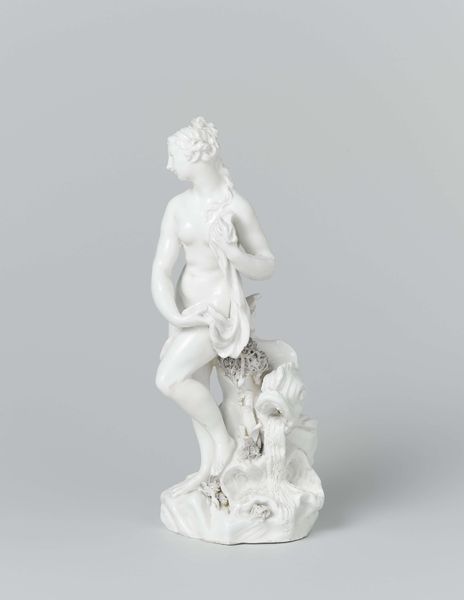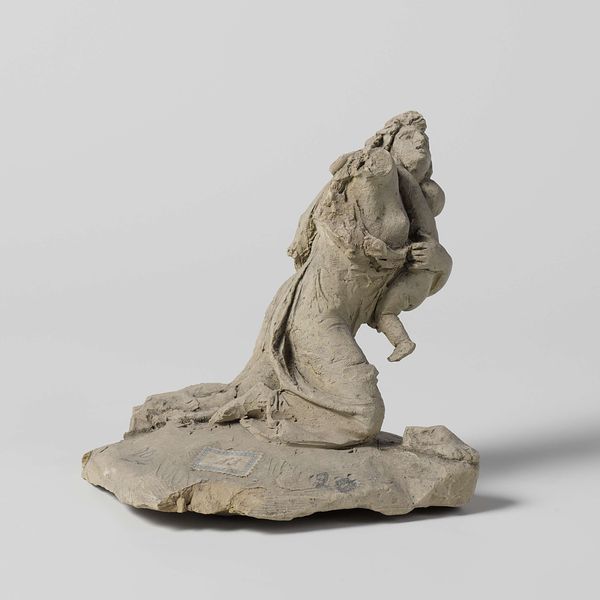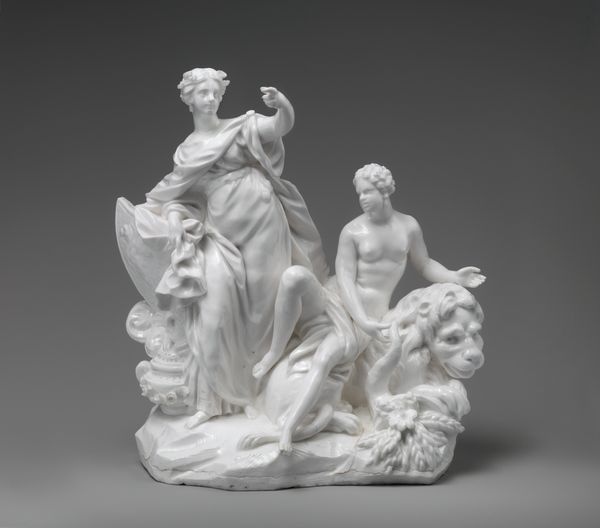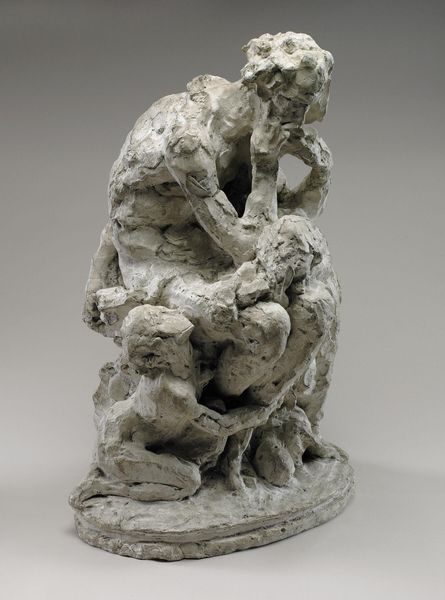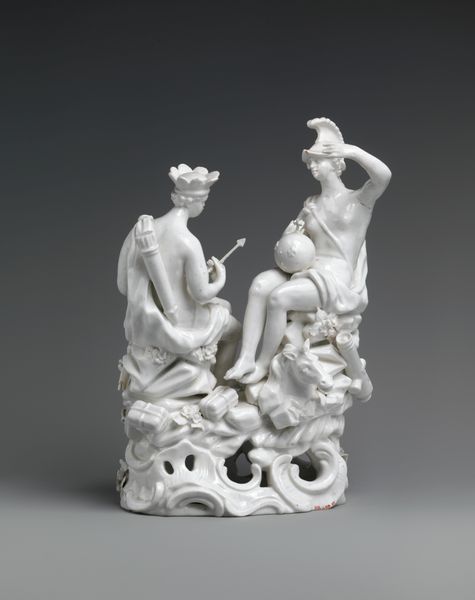
porcelain, sculpture
#
allegory
#
sculpture
#
porcelain
#
figuration
#
classicism
#
sculpture
#
rococo
#
statue
Dimensions: height 15.5 cm, width 8.0 cm, depth 8.6 cm, width 7.1 cm, depth 8.6 cm
Copyright: Rijks Museum: Open Domain
Curator: This exquisite porcelain sculpture, titled "De Zomer, uit een serie van de Vier Jaargetijden"—or "Summer, from a series of the Four Seasons"—was crafted by the Weesper porseleinfabriek around 1760-1763. What strikes you most about it? Editor: Its whiteness is arresting, almost luminous. There's a delicate coolness, a studied classical grace, and yet it feels undeniably charged, hinting at the complexities inherent in allegorical representation of gender and season. Curator: Absolutely. It's critical to understand the context of the Weesper factory and the broader 18th-century porcelain industry. Porcelain production was highly specialized labor. Think about the miners extracting kaolin, the craftspeople skilled in mold-making, and the painters meticulously applying detail—a whole chain of skilled labor for the consumption of a very elite clientele. Editor: The classical allusions are obvious: the flowing drapery, the idealized form of the woman representing Summer. I'm interested in the layers of power at play. On the one hand, this idealized woman embodies fertility and abundance, which intersects with conventional representation, yet where is she located in culture beyond this sculpture? This representation and the factory's commodification can all be understood within colonial structures and Dutch imperial history, considering enslaved persons produced the very commodities porcelain figures sought to emulate, that contrast is quite stark, right? Curator: Precisely. The very whiteness of the porcelain itself speaks to a desire for purity, perhaps even racial purity, reflecting anxieties of the time. Also, consider that molds were often reused or copied, resulting in slight variations and revealing traces of the manufacturing process. In this series, were molds repurposed? Do they present idealized women across different allegorical sculptures that convey certain gender roles for the female figure in each sculpture? Editor: Those small, material markers, the drips and imperfections that come out of mass-production, offer a critical counterpoint to the smoothed surfaces. Also, is it innocent that this sculpture also incorporates a child at its feet that some could recognize Cupid in the classical sense. What is the reading behind their relation to Summer? Curator: I think looking at the work through both lenses gives us a far richer understanding. Editor: Agreed, it allows us to ask deeper questions about the representation, about production and the wider social forces shaping their consumption and appreciation.
Comments
No comments
Be the first to comment and join the conversation on the ultimate creative platform.
